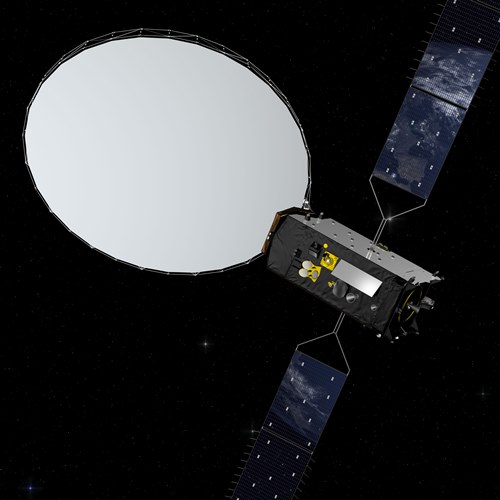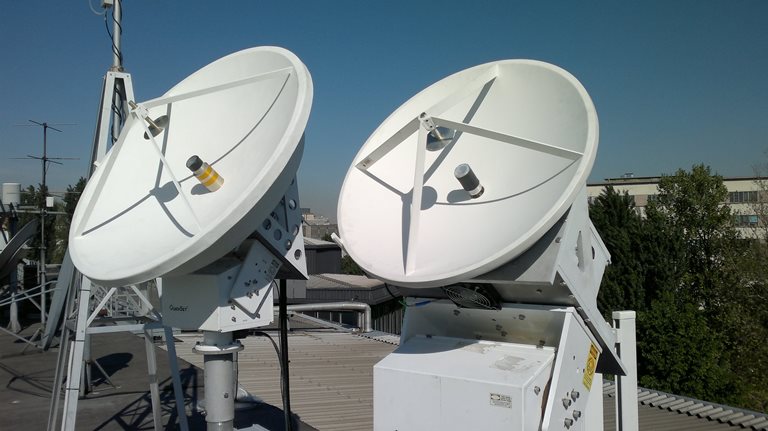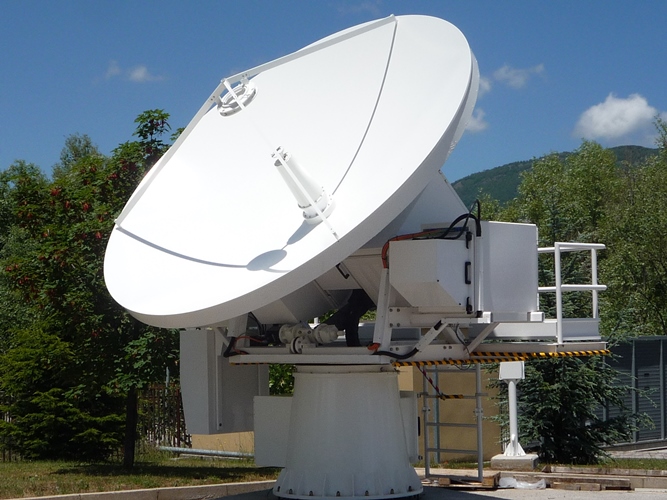Future broadband satellite communication systems should be able to offer terabit capacity and very high data rates as requested by the current market both for broadcast and multimedia applications. The goal is to offer satellite-based solutions competitive to the ones provided by the terrestrial network, with in addition the ability to reach directly any end user, whichever his location. This requires the use of high carrier frequencies in the Ka or Q/V bands and beyond in order to achieve the large bandwidth requested.
The utilization of millimetric waves (Ka, Q, V bands and above) in satellite communications requires the use of Propagation Impairments Mitigation Techniques (PIMT, such as ACM, on board reconfigurable antenna pattern, up/down link power control, site/frequency diversity, smart gateway configuration, etc.) to counteract severe atmospheric phenomena without excessive power expenditures. The possibility to design and exploit profitably these techniques is based on the knowledge coming from the propagation science, i.e. on accurate models for the space- and time-distribution of attenuation and on measurements for their validation.
A new European measurements campaign will be possible thanks to the Alphasat Aldo Paraboni payload. The Scientific experiment of such payload has been conceived by the late Prof. Aldo Paraboni and supported by the Italian Space Agency (ASI) as contribution to the Alphasat project which is executed by the European Space Agency (ESA) in the framework of the ARTES 8 Telecom programme.
The Alphasat satellite has been launched successfully on July 25 2013. The Aldo Paraboni Scientific (propagation) payload will allow simultaneous measurements of attenuation and depolarisation at 19.701 and 39.402 GHz during a long period (some years) all over Europe.
One of the two main ground stations is hosted at the experimental station of Politecnico di Milano at Spino d'Adda. The 4.2 m terminal is supported by radiometric, rain gauge and weather measurements. The goal is the identification of first and second order statistics of attenuation at the two frequencies, joint depolarization and attenuation measurements, sky noise temperature, instantaneous frequency scaling law and so on.
Many European research centres (11 at the time of writing) and NASA have adhered to the project and this will bring and invaluable contribution to the scientific community allowing the validation, among the others, of models of space-time correlation of rain/attenuation fields, of site diversity at small and large scale, and of spatial correlation of cloud fields.
Research activities in antennas are focused on the design and testing of innovative, compact antennas for the UHF band and for higher frequencies, with particular emphasis on pattern and polarization reconfigurable antennas for MIMO systems. As far as electromagnetic compatibility is concerned, the laboratory can carry out measurements and tests in both full-compliance or pre-compliance regime; moreover, its personnel can support SMEs in the design phase and/or during prototype characterization, exploiting the large knowledge base available at Politecnico di Milano.


The Alphasat satellite (left) and the NASA beacon receivers installed on the rooftop of Dipartimento di Elettronica, Informazione e Bioingegneria of Politecnico di Milano


The multichannel radiometer (left) and Alphasat receiving station (right) at Tito Scalo, Italy
